In
the case of wild bird traps look on fence posts
and tree stumps for the Pole trap. The best way to detect
this type of trap is with good quality binoculars to scan
the top of fence posts you can cover a very big area in a
matter of minutes as the trap will be on top and in the
open.
If you
see a lot of moss on a post or tree stump then this may
indicate that the trap is under the moss as most game
keepers and criminals will hide the trap not just form the
birds but from people looking for them as well so keep your
eye's open.
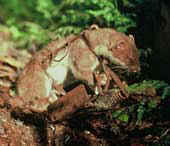
The
photo above shows us the work of a Mark IV Fenn trap with a
stoat trapped and killed in it the Fenn trap was invented by
Mr A. A. Fenn from Alcester, Warwickshire United Kingdom
there are a number of models now available and are used
around the world. The places to
look for the Fenn trap are along fences, hedges or the banks
of a stream, in bush among tree roots, beside fallen logs or
in dry culverts or any where for that matter.
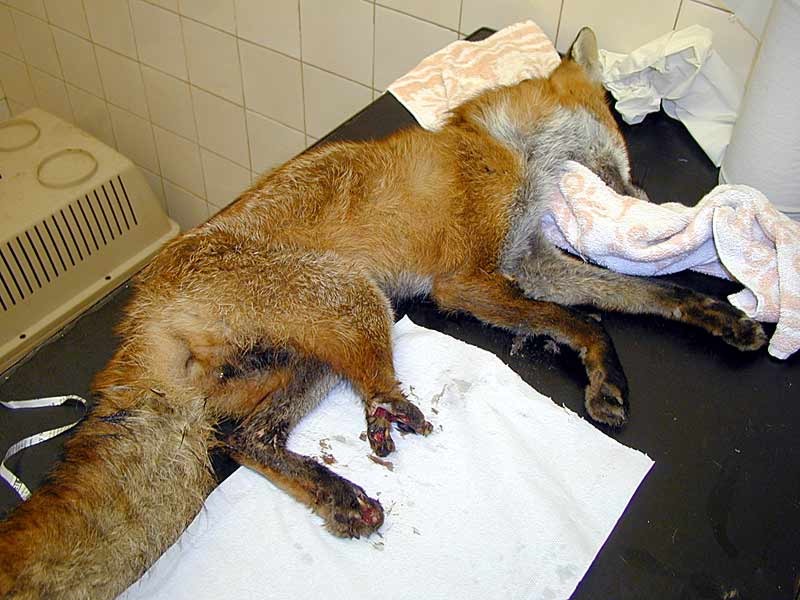
This
photo of a Vixen fox that got trapped in a Gin Trap just
shows the cruelty and why if you see traps like the Gin Trap
and more they should be removed and reported to the Police
or your Local Animal Rescue Centre. I would like to say a
big thank you to Paul & Marie from Derbyshire Fox Rescue
for the Photos. You can visit their site
here & here
is their Business site.
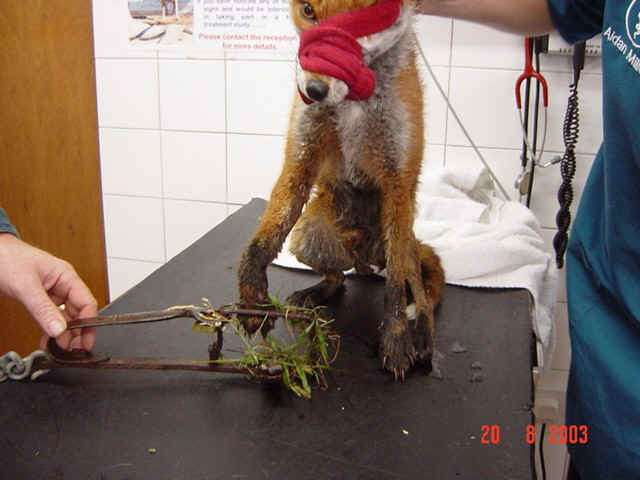
This
fox that got court
in a banned Gin Trap was found by Some caring members of the
public that alerted the Galway Society for Prevention of
Cruelty to Animals Ireland. Click
here to see the full article about this case.
I would
like to say a big thank you to the following people for
allowing me to re-publish the photo and to show how cruel
devises like this are and if you find them report them.
First thank you goes to Philip Kiernan of the Irish
Council Against Blood Sports.
I would like to
say a big thank you to Margaret O'Sullivan and the team at
the Galway SPCA Ireland for their permission to publish
the photo as well on this site thank you.
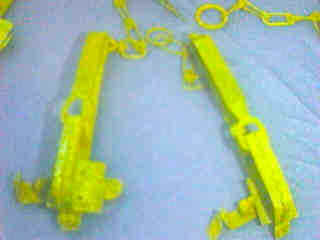
The
gin trap
This trap has
been banned in Britain since 1958. It was basically designed
as a 'leg hold' trap, the idea being not to kill the prey
but to hold it until the gamekeeper or trapper came to
dispatch the animal. Gin traps were usually placed in the
entrances to burrows or in artificial tunnels. The main
difference between the gin trap and any other is that the
jaws of the trap are toothed or serrated and this is what
gave the trap its ability to hold its prey, mainly by the
leg.
Anyone found
guilty of setting a gin trap which causes unnecessary
suffering to an animal faces a maximum £5,000 fine and/or
six months in prison.
In 2004,
there were 23 convictions for trapping-related offences
under the Wildlife and Countryside Act, 1981.
When
investigating gin trap complaints always check the underside
of any trap for signs of soil or fresh rust, also check the
spring mechanism for oil and scuff marks. These signs may
indicate the recent use of the trap. Be aware that legal
spring traps which have been modified by having teeth cut
into the jaws or even having fencing staples welded onto
them are illegal. These modifications alter the trap into a
form of gin.
If
you have Information on People having leg traps in your area
inform the local http://www.online.police.uk/forces.htm
to check
it out or
your local RSPCA Inspector
www.rspca.org
that
will be more than happy to help and have the power to get
access to the device to check it out do not tell the person
that you are going to report them for having the device.
The
National Anti-Snares Web Site
ACT
- Against Corvid Traps Exposing Shooting's Vile Underbelly
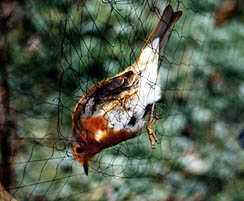
In the case
of wild Birds look out for netting in the woods this is
often put up by wildlife criminals to catch wild birds so
they can be sold on the black market in other Country's look
out for netting high up in the trees or things that look a
bit odd in our country side. If you do see something that
looks a bit odd contact your local Police station ask to
speak to the wildlife Liaison officer or contact the www.rspca.org.uk
or in the
case of wild bird's contact the
www.rspb.org.uk
or visit
the PAW
web site
on how to report wildlife crime.
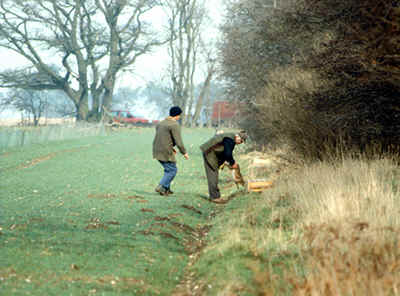
In
the case of hare netting this is a long net strung out
across a field so the hare courser's can send there dogs in
so the hares run out and get court in the netting this is so
they get taken to hare coursing events as will often be the
case there will be gangs of courser's in one field contact
your local police station or the www.rspca.org.uk
or the www.league.uk.com
ask to
speak to the investigation team the LACS are interested in
every form of wildlife crime and need your help to expose
it. Radio
scanning, badger digging hare coursing & the police what
you should know.
Photo
by LACS Investigating team.